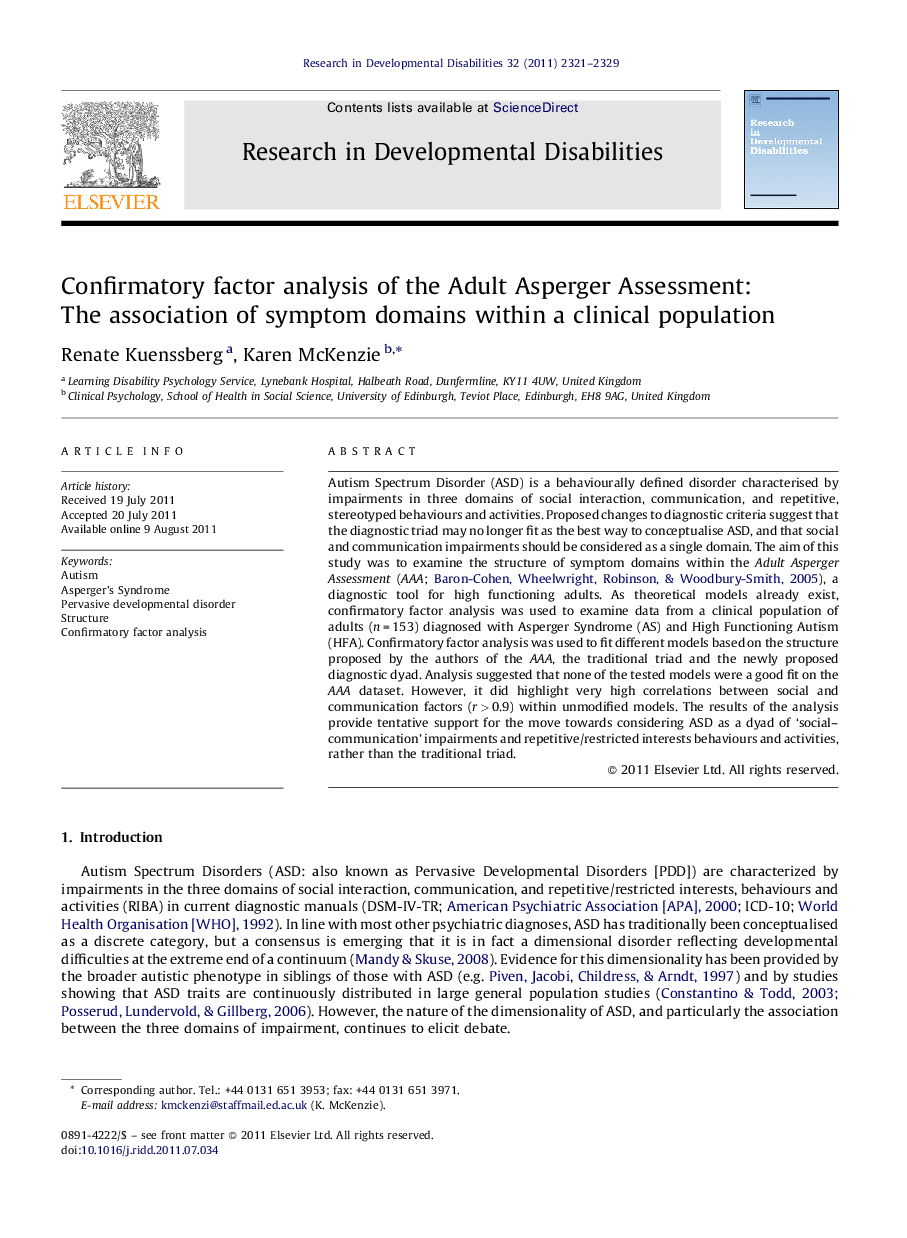| Article ID | Journal | Published Year | Pages | File Type |
|---|---|---|---|---|
| 371810 | Research in Developmental Disabilities | 2011 | 9 Pages |
Autism Spectrum Disorder (ASD) is a behaviourally defined disorder characterised by impairments in three domains of social interaction, communication, and repetitive, stereotyped behaviours and activities. Proposed changes to diagnostic criteria suggest that the diagnostic triad may no longer fit as the best way to conceptualise ASD, and that social and communication impairments should be considered as a single domain. The aim of this study was to examine the structure of symptom domains within the Adult Asperger Assessment (AAA; Baron-Cohen, Wheelwright, Robinson, & Woodbury-Smith, 2005), a diagnostic tool for high functioning adults. As theoretical models already exist, confirmatory factor analysis was used to examine data from a clinical population of adults (n = 153) diagnosed with Asperger Syndrome (AS) and High Functioning Autism (HFA). Confirmatory factor analysis was used to fit different models based on the structure proposed by the authors of the AAA, the traditional triad and the newly proposed diagnostic dyad. Analysis suggested that none of the tested models were a good fit on the AAA dataset. However, it did highlight very high correlations between social and communication factors (r > 0.9) within unmodified models. The results of the analysis provide tentative support for the move towards considering ASD as a dyad of ‘social–communication’ impairments and repetitive/restricted interests behaviours and activities, rather than the traditional triad.
► Research suggests the diagnostic triad may not be the best way to conceptualise ASD. ► This study examined the structure of the Adult Asperger Assessment (AAA). ► Confirmatory factor analysis fitted data from a clinical sample to different models. ► These were: the AAA structure, the triad and the newly proposed diagnostic dyad. ► None of the tested models were a good fit on the AAA dataset.
